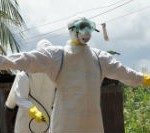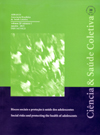Abril/2013

Atila Iamarino
The journal História, Ciências, Saúde – Manguinhos, published by the Casa de Oswaldo Cruz/Fiocruz, is investing in the internet’s potential in science communication by launching a bilingual blog and profiles on Twitter and Facebook.
To hear comments on the project, which is part of a groundbreaking movement among Brazilian scientific journals, we interviewed Atila Iamarino, biologist, post-doctoral student in microbiology, co-founder of ScienceBlogs Brasil and also author of the blog Rainha Vermelha (Red queen). Iamarino has set the benchmark in national science blogs and believes that this launch will be an example for other journals and institutions still reluctant to embrace new communication technologies.
Many academics still turn their noses up at the internet because they believe it’s a “no man’s land” devoid of quality content. What would you tell them?
I would say that the model of a central, organizing content that has a good reputation – as was the case with encyclopedias and major periodicals – is no longer feasible, or at least canonical, on the internet. To some extent, the production of content and responsibility for it is being passed on to users, who play a much more active role here than in the media these researchers grew up with and are familiar with. The current focus must be much more on searching and interpreting quality content from different sources than on the passive role of a consumer of content produced by one or two “reliable” sources. Even in relation to articles and periodicals, the way in which research is disseminated is changing: the focus is on the article’s content, found by using search tools and not in the few, select periodicals a library subscribes to. And little or nothing is being done to prepare high-school, undergraduate and graduate students to search and critically evaluate available content.
How can tools like blogs and social networks contribute to scientific periodicals?
Blogs and social networks can contribute to all stages of research, from the formulation of hypotheses and the design of experiments to the dissemination and discussion of published results. In the case of periodicals, blogs and social networks can also serve as disseminating tools. They create a series of metrics, such as the number of visits, downloads of articles, sharing and favorites, which help interpret the impact of research – and this includes predictive value as well, since you have indications of which articles will be more referenced in the future. In addition to dissemination, blogs and networks play a supporting role in the evaluation and dissemination of research. When a researcher comments on an article he read in your blog, he’s making that content accessible to lay readers. Not only because this work is very often only available to subscribers – generally at an exorbitant cost to the end-user – but also because it’s written in simpler language. There’s also the role of evaluating the research: before, an article might be evaluated by only the two or three researchers who reviewed its content before publication, leaving open the possibility that the work would be evaluated by researchers lacking the required technical background. Today, even after publication, an article can be evaluated and discussed by thousands of specialists, who will bring new perspectives to the results, greatly reducing the chances that an invalid result will go unnoticed.
Could you explain this aspect of evaluating scientific articles a little more?
The editor selects the best reviewers for an article and counts on their specialization to ensure that they correctly assess the work. But in some cases the reviewers are not qualified to evaluate what they receive, and maybe they don’t turn down the task or don’t even realize the problem, and so they evaluate the work incompletely. This was the case, for example, of the article on bacteria that used arsenic in its DNA, in which the reviewers failed to notice that some of the reagents used could contain minimum quantities of the element phosphorus, which could be used by the bacteria (and it seems that’s what happened). Of course, among the readers, many might offer tips that contribute nothing to a study, or ask irrelevant questions – take, for example, comments on scientific reports on newspaper sites. But it takes only one specialist to question important points and even invalidate a study, as was the case with researcher Rosie Redfield. In this sense, exposure of the article on the internet raises the chances of having the work evaluated by a reviewer (even an uninvited one) who is really able to do so.
The journal História Ciências Saúde – Manguinhos is launching its interactive arm through this blog and profiles on Facebook and Twitter. Do you think this was the right decision? Why?
I thoroughly agree that it was the right decision at the right time, and it can serve as an example for many periodicals and institutions that are still reluctant to embrace new technologies – which, at the pace of the internet, are not even really so new. Social networks and new media are the reality for the vast majority of students and recently graduated researchers, and they have excellent potential in all aspects, from a student’s learning to the dissemination of research done in Brazil, at a very low cost. However, what I mostly see when looking at the dissemination of research through new media are institutions that have adopted no online tools as yet, because they are leery of restrictions that very often aren’t exclusive to these media. The issue of content being copied, for example, doesn’t even necessarily need to be a concern for not-for-profit organizations, since content is being shared and no one is losing money as a result. Nor is it solely an internet problem – the internet just facilitates this type of copying.
Do you have any tips for us?
My tip is this: make use of everything these tools afford. There’s no point in writing a blog or social profile and publishing content as a scientific article, or closed off in text or PDF files. No point in acting as if yours were only a printed journal when you have so many other possibilities. Use channels, publish photos and videos, reference online content, and use open-access links and content. Interview researchers and show them how what they do can be made more accessible through these media. On the ScienceBlogs email list, we were commenting on how a recent New York Times report did this very well, talking about an avalanche through videos, maps and photos. When we see this kind of content, we realize how we are limiting ourselves when the only thing we reproduce online is old media.








